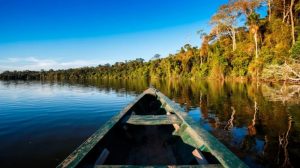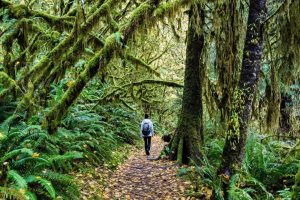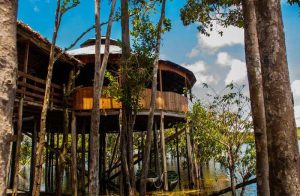Step into the lush world of Rainforest cultural experiences and indigenous tours where vibrant traditions blend with the beauty of nature, promising a journey like no other. Get ready to immerse yourself in the wonders of the rainforest!
Mountain Travel

When embarking on mountain travel, visitors have the opportunity to immerse themselves in unique cultural experiences that are deeply rooted in the traditions of indigenous communities. These mountain regions offer a glimpse into a way of life that has been preserved for generations.Indigenous communities in mountain areas play a vital role in preserving their traditions through practices such as storytelling, music, dance, and art.
These traditions are passed down from elders to the younger generation, ensuring that cultural heritage remains intact.
Unique Cultural Experiences
In mountain regions, visitors can partake in traditional ceremonies, witness intricate craftsmanship, and learn about the spiritual beliefs of indigenous tribes. The rich tapestry of cultural practices includes intricate weaving techniques, traditional music performances, and culinary delights unique to each community.
Comparison of Mountain Tribes
While each mountain tribe has its own distinct cultural practices, there are common threads that connect them. For example, the reverence for nature, the importance of community, and the celebration of ancestral wisdom are themes that resonate across different mountain regions. However, the specific rituals, dances, and art forms vary depending on the tribe’s history, geography, and interactions with neighboring communities.
Desert Travel
Indigenous tours in desert environments offer a unique cultural experience, providing insight into the traditional knowledge and lifestyles of desert communities.Deserts hold immense cultural significance for indigenous peoples, representing a deep connection to the land and environment. These tours allow visitors to learn about the rich history, stories, and traditions passed down through generations in desert communities.
Traditional Knowledge of Indigenous Peoples in Deserts
- Indigenous peoples in deserts possess valuable knowledge of plant and animal species that are essential for survival in harsh conditions.
- They have mastered techniques for finding water sources and navigating vast desert landscapes using natural landmarks and celestial cues.
- Traditional healing practices involving desert plants and herbs are also a significant part of indigenous knowledge in desert regions.
Adaptation to Harsh Desert Environments
- Desert communities have developed sustainable practices to cope with extreme heat, limited water resources, and unpredictable weather patterns.
- Traditional desert dwellings, such as adobe houses and tents, are designed to provide shelter while minimizing exposure to harsh elements.
- Indigenous peoples have adapted their diets to include drought-resistant crops and have specific culinary traditions that utilize desert plants and animals.
Arctic & Polar Travel
Exploring the Arctic and Polar regions offers a unique opportunity to delve into the rich cultural heritage of indigenous tribes who have thrived in extreme cold climates for centuries.
Cultural Heritage of Arctic Indigenous Tribes
Indigenous tribes in the Arctic, such as the Inuit, Yupik, and Sami, have a deep connection to the land and sea. Their traditional way of life revolves around hunting, fishing, and gathering resources from the harsh environment.
- The Inuit people, known for their resilience and adaptability, have a strong oral tradition that preserves their history, myths, and legends.
- The Yupik tribes in Alaska and Siberia have maintained their distinctive cultural practices, including mask dancing and storytelling, despite modern influences.
- The Sami people of Scandinavia have a unique connection to reindeer herding and traditional handicrafts, showcasing their sustainable lifestyle and cultural traditions.
Sustainable Practices of Arctic Indigenous Communities
Arctic indigenous communities have developed sustainable practices that allow them to thrive in the harsh environment while preserving their cultural heritage.
- Traditional hunting and fishing techniques are passed down through generations, ensuring the responsible use of natural resources.
- Indigenous tribes prioritize sharing and cooperation within their communities to ensure everyone’s well-being and survival.
- Respect for the environment is ingrained in their cultural values, leading to practices that minimize waste and protect fragile ecosystems.
Stories of Resilience and Survival from Arctic Indigenous Groups
Arctic indigenous groups have incredible stories of resilience and survival in the face of extreme cold climates and challenging conditions.
- Historical accounts of expeditions and migrations across vast icy landscapes showcase the determination and resourcefulness of indigenous tribes.
- Survival techniques, such as igloo building, ice fishing, and clothing made from natural materials, highlight the ingenuity and adaptability of Arctic communities.
- Modern challenges, including climate change and loss of traditional lands, are met with resilience and innovation by indigenous groups seeking to preserve their way of life.
Jungle & Rainforest Travel

Rainforest tours offer a unique opportunity to immerse oneself in nature while learning about the rich cultural heritage of indigenous tribes.Indigenous guides play a crucial role in rainforest travel, providing insights into their traditional way of life, knowledge of the land, and sharing captivating stories passed down through generations.
Importance of Rainforest Conservation
Rainforest conservation is vital not only for preserving biodiversity but also for safeguarding the cultural heritage of indigenous tribes. These forests are home to countless plant and animal species, many of which are integral to the traditional practices and beliefs of indigenous communities.
- Preserving rainforests ensures the continuity of indigenous cultures, as these communities rely on the forest for resources, spiritual practices, and traditional knowledge.
- Deforestation and habitat loss pose a direct threat to the existence of indigenous tribes, leading to displacement and loss of cultural identity.
- By protecting rainforests, we can support the sustainable livelihoods of indigenous peoples and contribute to the preservation of their unique cultural heritage.
Traditional Medicinal Knowledge
Indigenous tribes living in rainforests possess a wealth of traditional medicinal knowledge, utilizing plants and natural remedies for healing purposes.
Indigenous healers often rely on plants with powerful medicinal properties, using them to treat a wide range of ailments and conditions.
- Through centuries of observation and experimentation, indigenous communities have developed a deep understanding of the healing properties of various plant species.
- Traditional medicine in rainforest cultures is holistic, focusing on the interconnectedness of mind, body, and spirit in promoting overall health and well-being.
- By acknowledging and respecting the traditional medicinal knowledge of indigenous tribes, we can learn valuable lessons about the importance of sustainable healthcare practices and the preservation of natural resources.
Coastal & Beach Travel
When it comes to coastal and beach travel, exploring the cultural practices of coastal indigenous communities offers a unique and enriching experience. These communities have a deep connection to the sea, which is evident in their traditions, rituals, and way of life.
Participating in indigenous tours along coastlines not only allows travelers to learn about the rich cultural heritage of these communities but also plays a crucial role in cultural preservation. By engaging with indigenous peoples and supporting their initiatives, travelers contribute to the protection and promotion of their traditional practices and knowledge.
Connection between Indigenous Peoples and the Sea
- Indigenous communities along the coast have relied on the sea for sustenance for generations, developing sustainable fishing practices and marine resource management techniques.
- The sea plays a central role in the spiritual beliefs and ceremonies of coastal indigenous peoples, symbolizing life, renewal, and connection to ancestors.
- Traditional crafts such as boat-building, fishing tools, and seaweed harvesting demonstrate the intimate relationship between indigenous peoples and the marine environment.
- Coastal indigenous communities often have oral histories and legends that narrate their ancestral ties to the sea, passing down knowledge through storytelling and cultural practices.
Epilogue
As we conclude our exploration of Rainforest cultural experiences and indigenous tours, we are left with a profound appreciation for the deep connection between indigenous communities and their natural surroundings. The rich tapestry of cultures woven within the rainforest leaves a lasting impression of harmony and preservation.
FAQ Guide
Are there any specific rituals I can participate in during a rainforest tour?
Yes, many indigenous tours offer opportunities to partake in traditional ceremonies and rituals, providing an immersive cultural experience.
How can I contribute to rainforest conservation while on an indigenous tour?
You can support conservation efforts by respecting the environment, learning about sustainable practices, and supporting local initiatives dedicated to preserving the rainforest.
What sets rainforest tours with indigenous guides apart from regular tours?
Rainforest tours with indigenous guides offer a unique perspective rooted in centuries-old traditions, providing a deeper understanding of the ecosystem and cultural significance of the rainforest.




